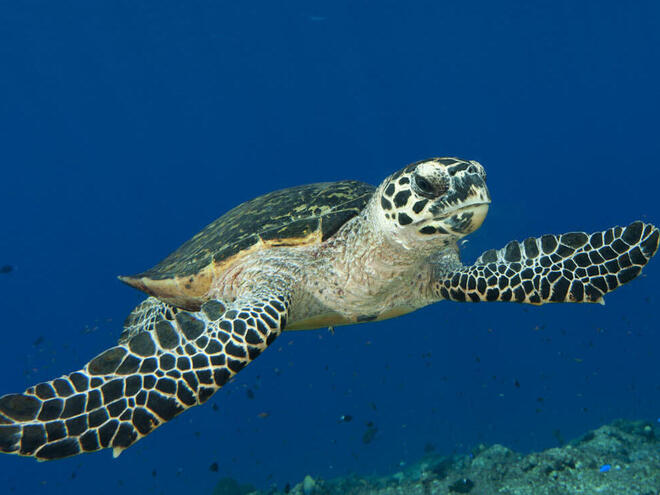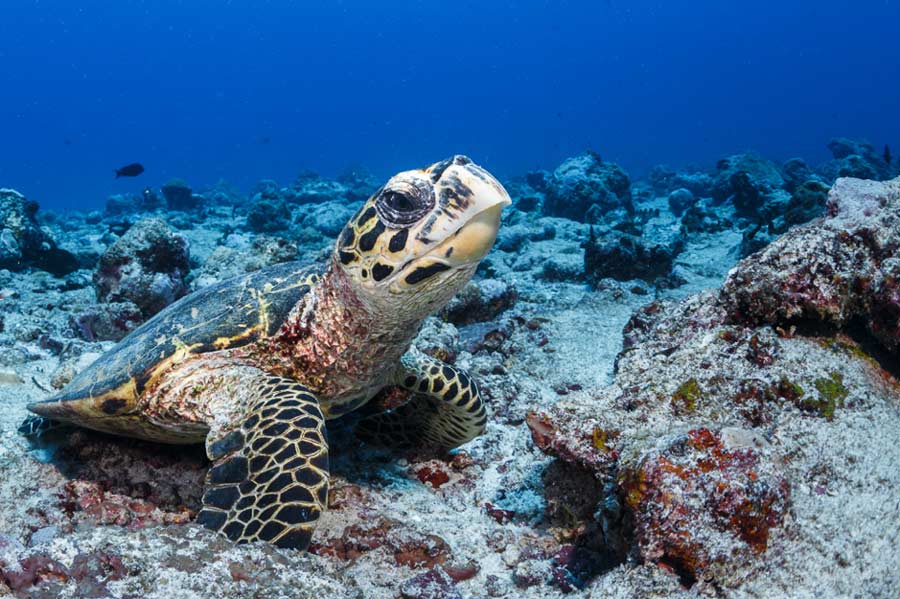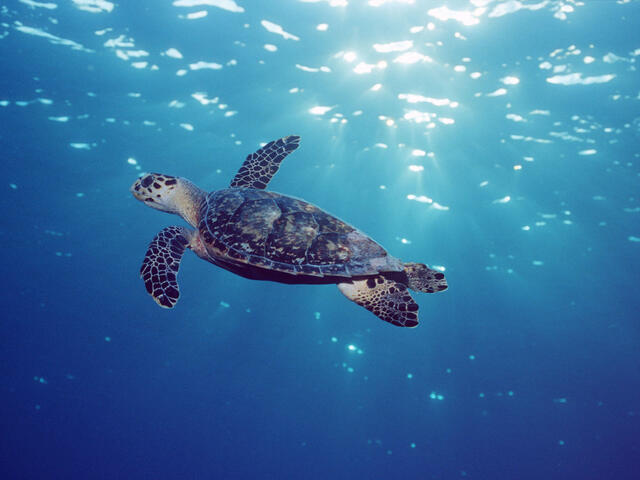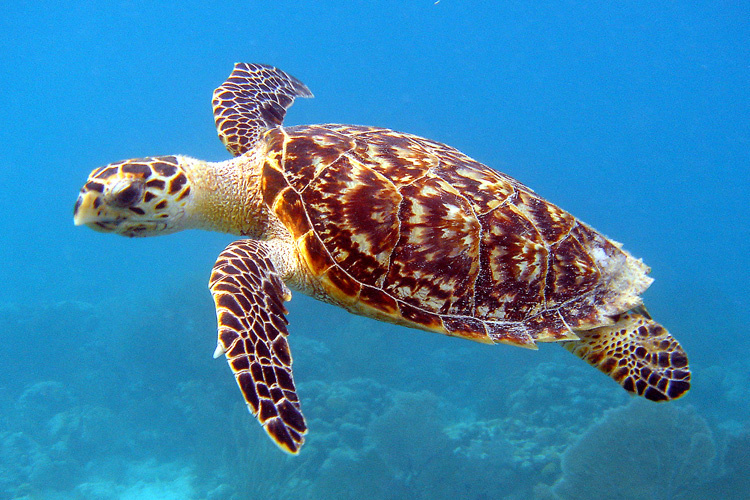Hawksbill turtles are classified as critically endangered species due to factors such as habitat destruction and illegal trade. Few creatures are as intriguing as hawksbill turtles, the enchanting marine reptiles that inhabit the world’s oceans.
These magnificent beings, scientifically known as Eretmochelys imbricata, are smaller than other marine turtle species, reaching lengths ranging from 30 to 45 inches. Endemic to the tropical and subtropical regions of the Atlantic, Pacific, and Indian Oceans, hawksbill turtles possess a captivating shell that displays a blend of gold, amber, and brown hues.
Unfortunately, these majestic creatures are facing a dire threat to their survival. Hawksbill turtles are currently classified as critically endangered animals by the International Union for Conservation of Nature (IUCN) due to factors such as habitat destruction, pollution, climate change, and, most significantly, illegal trade. The urgent need for conservation efforts is crucial to protect these charismatic creatures from the brink of extinction.

Credit: www.worldwildlife.org
Background On Hawksbill Turtles
The hawksbill turtle (Eretmochelys imbricata) is a critically endangered species that plays a vital role in marine ecosystems. These fascinating creatures have a distinctive appearance characterized by a pointed beak-like mouth, beautifully patterned scutes on their carapace, and sharp claws. With an average length of about three feet, they can weigh between 100-150 pounds. Hawksbill turtles are mostly found in tropical waters around coral reefs, lagoons, and mangrove swamps.
These turtles have a unique beak-like mouth specially adapted for reaching into narrow crevices in coral reefs to find their main source of sustenance – sponges. Their carapace, or shell, is a richly intricate mosaic of vibrant colors, making them inimitable and highly sought after by poachers. Hawksbill turtles are also known for their strong front flippers, which help them navigate through the water with agility and grace.
Hawksbill turtles are found in various parts of the world, including the Caribbean Sea, the Indian Ocean, the Pacific Ocean, and the Red Sea. They are migratory and often travel long distances between nesting and feeding areas. Coral reefs serve as their primary habitat, as they provide protection and ample food sources. Despite their wide distribution, hawksbill turtle populations worldwide have been severely depleted due to human activities such as over-harvesting, habitat destruction, and climate change.

Credit: oliveridleyproject.org
Status Of Hawksbill Turtles
Hawksbill turtles are classified as critically endangered animals by the International Union for Conservation of Nature (IUCN). Their population has drastically declined over the years due to various threats. These turtles face numerous challenges that put their survival at risk.
- One of the primary threats to hawksbill turtles is habitat loss. The destruction of coral reefs, their main nesting and feeding areas, has a significant impact on their ability to thrive.
- Illegal hunting and trade of hawksbill turtles for their beautiful shell, known as “tortoiseshell,” also contribute to their endangered status. Despite international bans on the trade of hawksbill products, the black market demand remains a constant threat.
- Climate change and pollution have detrimental effects on hawksbill turtle populations. Rising sea levels and increased ocean temperatures affect their nesting beaches, while pollution from plastics and chemicals harms their overall health and reproductive success.
Efforts to conserve hawksbill turtles are essential in preventing their extinction. Conservation initiatives include establishing marine protected areas where hawksbill turtles and their habitats are legally safeguarded. Educational programs are also crucial in raising awareness about the importance of preserving these majestic creatures and their ecosystems.
By addressing the threats faced by hawksbill turtles and implementing effective conservation measures, we can strive towards ensuring the survival and recovery of these endangered animals for future generations.

Credit: www.worldwildlife.org
Conclusion
The hawksbill turtle is indeed an endangered species, facing numerous threats to its survival. Habitat loss, climate change, pollution, and poaching have all contributed to the decline in their population. Efforts to protect these majestic creatures and their habitats are crucial to ensure their long-term survival.
By raising awareness and implementing conservation initiatives, we can help safeguard the future of the hawksbill turtle and preserve its important role in marine ecosystems.






Leave a Reply